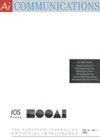基于MGBA-LSTM-CNN模型的中文知识自动问答
IF 1.4
4区 计算机科学
Q4 COMPUTER SCIENCE, ARTIFICIAL INTELLIGENCE
引用次数: 0
摘要
基于知识的问答(KBQA)的目的是通过知识三元组准确地回答用户提出的问题。中国传统的KBQA方法严重依赖人工特征,导致质量保证结果不理想。为了解决上述问题,本文将中文KBQA分为实体抽取和属性映射两个部分。在实体提取阶段,采用改进的Bi-LSTM-CNN-CRF模型对问题实体进行识别,采用Levenshtein距离法解决实体链接误差。在属性映射阶段,根据问题和候选属性的特点,提出了MGBA-LSTM-CNN模型,分别从语义层和词层对问题和候选属性进行编码,并拼接成新的语义向量。最后,使用余弦距离度量两个向量的相似性,以找到与问题最相似的候选属性。实验结果表明,该系统在中文问答数据集上取得了较好的效果。本文章由计算机程序翻译,如有差异,请以英文原文为准。
Automatic Chinese knowledge-based question answering by the MGBA-LSTM-CNN model
The purpose of knowledge-based question answering (KBQA) is to accurately answer the questions raised by users through knowledge triples. Traditional Chinese KBQA methods rely heavily on artificial features, resulting in unsatisfactory QA results. To solve the above problems, this paper divides Chinese KBQA into two parts: entity extraction and attribute mapping. In the entity extraction stage, the improved Bi-LSTM-CNN-CRF model is used to identify the entity of questions and the Levenshtein distance method is used to resolve the entity link error. In the attribute mapping stage, according to the characteristics of questions and candidate attributes, the MGBA-LSTM-CNN model is proposed to encode questions and candidate attributes from the semantic level and word level, respectively, and splice them into new semantic vectors. Finally, the cosine distance is used to measure the similarity of the two vectors to find candidate attributes most similar to questions. The experimental results show that the system achieves good results in the Chinese question and answer data set.
求助全文
通过发布文献求助,成功后即可免费获取论文全文。
去求助
来源期刊

AI Communications
工程技术-计算机:人工智能
CiteScore
2.30
自引率
12.50%
发文量
34
审稿时长
4.5 months
期刊介绍:
AI Communications is a journal on artificial intelligence (AI) which has a close relationship to EurAI (European Association for Artificial Intelligence, formerly ECCAI). It covers the whole AI community: Scientific institutions as well as commercial and industrial companies.
AI Communications aims to enhance contacts and information exchange between AI researchers and developers, and to provide supranational information to those concerned with AI and advanced information processing. AI Communications publishes refereed articles concerning scientific and technical AI procedures, provided they are of sufficient interest to a large readership of both scientific and practical background. In addition it contains high-level background material, both at the technical level as well as the level of opinions, policies and news.
 求助内容:
求助内容: 应助结果提醒方式:
应助结果提醒方式:


